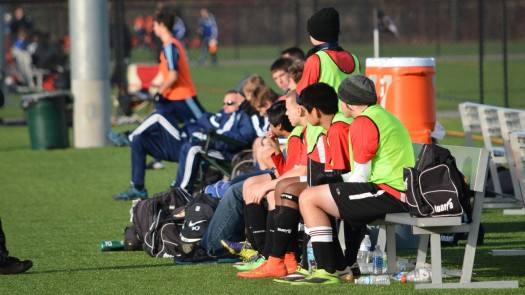Dure: Travel soccer needs more soccer, less travel
 Like a lot of soccer-beholden families, we awaited the release of the fall schedules with considerable anticipation last month.
Like a lot of soccer-beholden families, we awaited the release of the fall schedules with considerable anticipation last month.
When we got them, we considered ourselves very lucky. Our longest drive is 31 minutes.
Other teams in our age group are easily driving more than an hour for league games. That’s assuming they won’t face traffic. Which they will. In older age groups, we have elementary school mates in Northern Virginia playing league games in Pennsylvania and Delaware.
+READ: Dure: Youth soccer’s vanishing middle class
That’s what the push for “elite” league play has wrought. We have convinced parents that the only teams who can give their little darlings a decent game all happen to live 100 miles away.
In a lot of cases, you can look at every available data point of a club’s competitive history and the lists of players they’ve developed, and you’ll find no evidence whatsoever that the club 100 miles away will offer them a better game than a club five miles away. But the coaches have sold it, and the parents have bought it.
Here’s how Infinity SC’s Jeff Ginn put it:
There is a new way of creating an ‘elite’ league or event. Any organization can start an elite level league. The steps are:
1. Announce the launch of a new Elite youth league with the requisite fanfare and promotion.
2. Market the new league to all the competitive level players.
 3. Create special showcase tournaments and invite college coaches.
3. Create special showcase tournaments and invite college coaches.
4. Hope that the buzz created will pull the best players and then you are on your way.
The bizarro result is that we’ve flipped the pyramid. We should surely be casting a wide net for kids who may develop into stars, at least on the lower levels. Logically, we should have two to three times as many “developmental” players as we have “elite” players, casting a wide net for players who have a little bit of aptitude or athleticism today and may turn into terrific players in a few years. But these days, everyone has to be “elite.” Those parents aren’t paying $2,000 a year to be in a lesser league than that other family at the pool.
And to convince themselves they’re “elite,” they have to get into an elite league. Some of these leagues only cover the top age groups. Others trickle down into Single-Digit Soccer level (U-10 and below).
+READ: Dure: U.S. Soccer’s birth-year plan is shortsighted, helping coaches, not kids
These elite leagues have to be exclusionary to seem “elite.” So the traditional travel league just isn’t enough.
Developmental leagues are left scrambling. One local league that hosts clubs’ developmental teams is down to 10 teams at the U-9 girls level. And so they can easily end up traveling long distances because the league can’t make up a bunch of regional divisions.
 Naturally, some parents get sick of all this, both at the “elite” level and the “developmental” level. We all know families that have changed clubs or quit soccer entirely because they, quite reasonably, can’t take three kids to three states each Sunday.
Naturally, some parents get sick of all this, both at the “elite” level and the “developmental” level. We all know families that have changed clubs or quit soccer entirely because they, quite reasonably, can’t take three kids to three states each Sunday.
Many “elite” families, though, embrace it. Travel miles become badges of honor. The long trips show how much they’re willing to help their kids chase their dreams.
But are they really helping? What will they gain from playing a team of talented but unrefined U-10s 300 miles away that they couldn’t get from playing a team of talented but unrefined U-10s in the next town?
+READ: Dure: Young players must learn to pass the dadgum ball
And if we’re trying to align ourselves more perfectly with the global game, aren’t we moving farther away from this goal? European countries are sending coaches out so no player is more than 15 miles from quality training and competition; U.S. coaches seem intent on proving no other team within 15 miles is worth playing.
It’s especially curious because we’re told we need to be focusing more on the training, not the games. We’re not chasing results. We’re developing players.
I’m just not sure how well players develop in a minivan.
—
Beau Dure’s new book, Single-Digit Soccer: Keeping Sanity in the Earliest Ages of the Beautiful Game, is now available in electronic form at Amazon, Barnes and Noble, and other online booksellers. The paperback edition will be available in September.
SOCCERWIRE MARKETPLACE
- The St. James FC Travel Staff Coach - North (Loudoun) & South (Fairfax)
- The St. James FC Girls Academy (GA) Head Coach - 2 teams
- The St James FC Boys Travel Tryouts
- OFFICIAL BAYERN MUNICH SUMMER CAMPS U.S.
- JOIN THE ALLIANCE!
- OFFICIAL FC BARCELONA CAMPS U.S.
- The Cup San Diego - Hosted by Legends FC
- Players Wanted - Undergraduate or Post-graduate
- Head Coach - South Region at The St. James FC
- Travel Coach - North Region at The St. James FC











